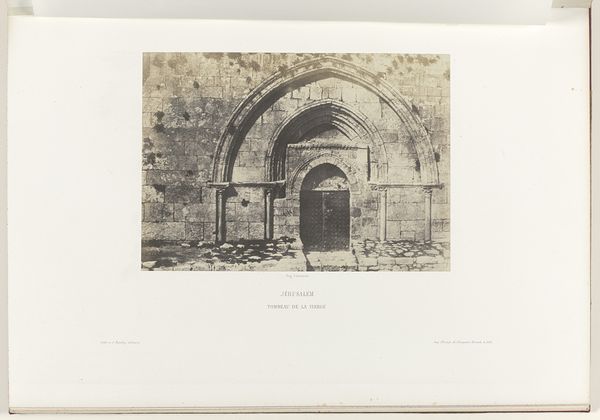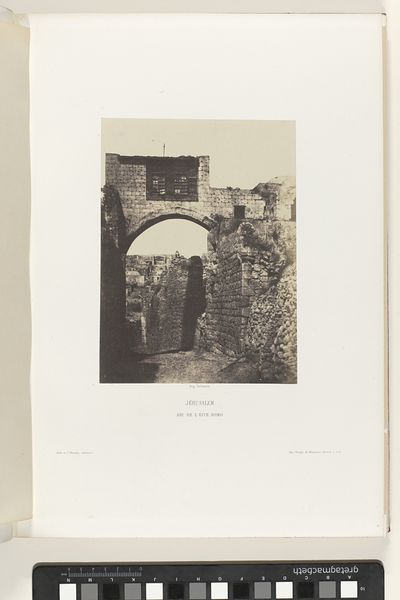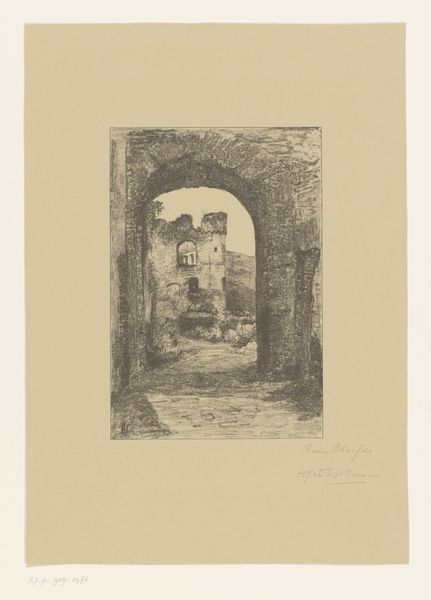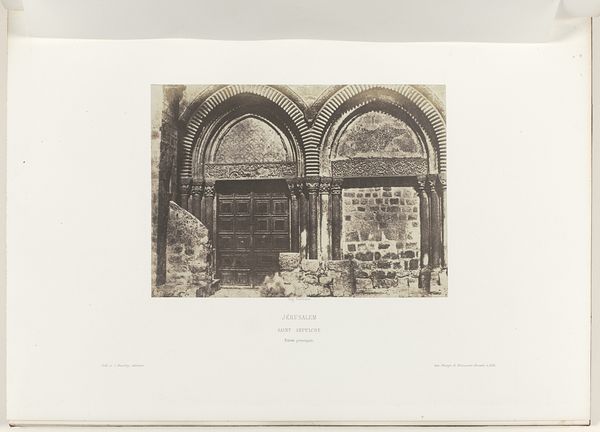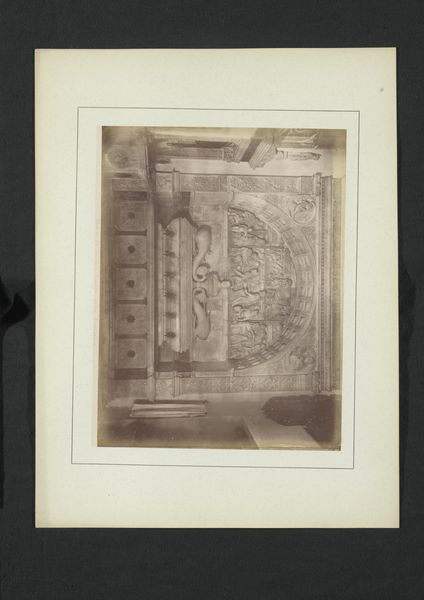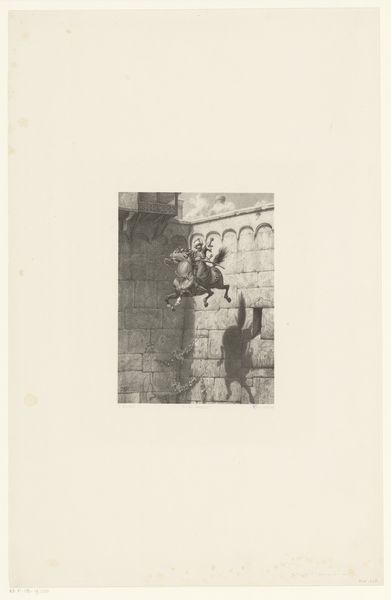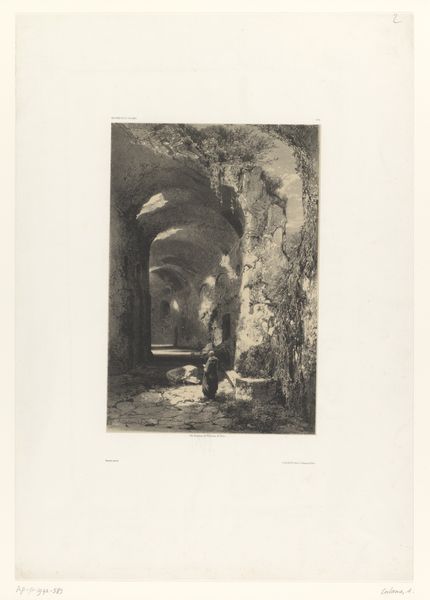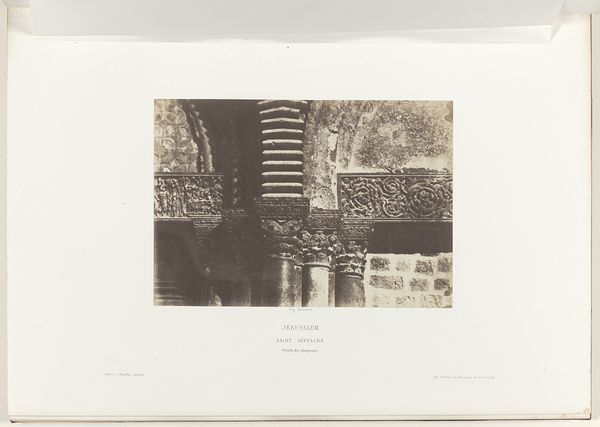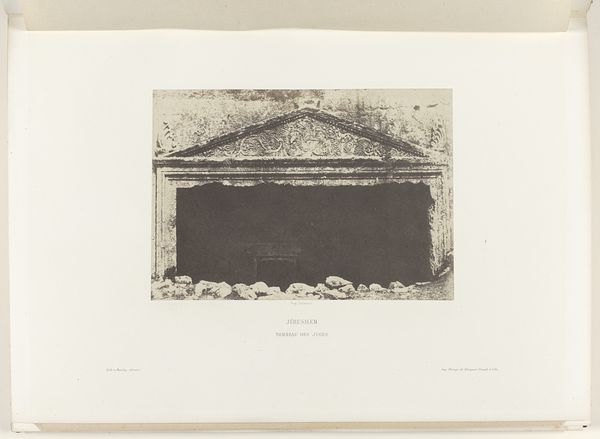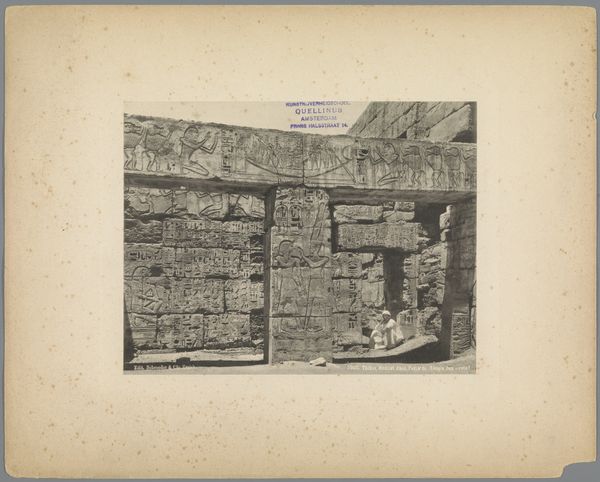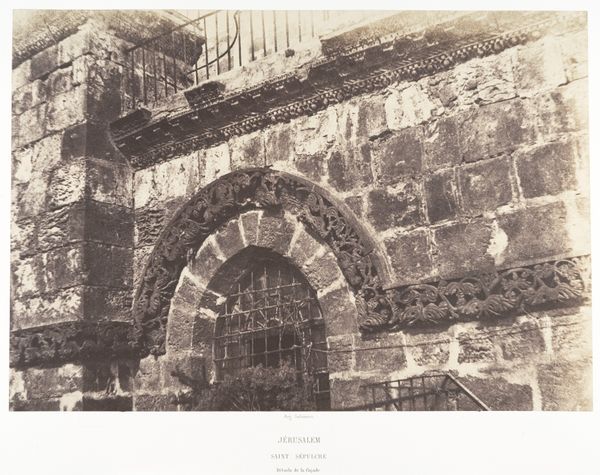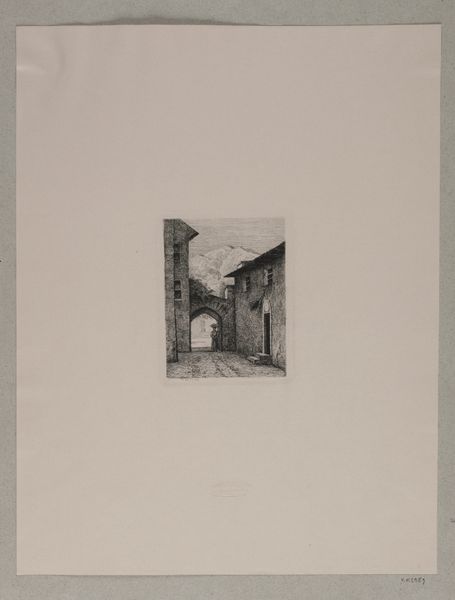
print, photography, albumen-print
# print
#
landscape
#
photography
#
ancient-mediterranean
#
arch
#
cityscape
#
albumen-print
Dimensions: height 150 mm, width 218 mm
Copyright: Rijks Museum: Open Domain
Curator: Let’s consider this albumen print, "Arch of the Church of Saint Mary of the Latins, Jerusalem," captured between 1854 and 1856 by Auguste Salzmann. Editor: My first impression is one of quiet grandeur, a study in contrasts. The starkness of the stone, combined with the arching form, creates an immediate sense of depth and monumentality. Curator: Salzmann was commissioned by Henri de Luynes, tasked with producing photographic evidence to support theories about the Temple Mount's original location. This wasn't purely an artistic endeavor; it had explicit political and scholarly intentions. Editor: Right, it speaks volumes about the materials used: the rough-hewn stones, their arrangement—all laboriously worked, reflecting the time and energy invested. There's an honest simplicity to it. This albumen process too, must have been meticulous. Curator: Exactly. The choice of albumen print, itself a laborious process, offered exceptional detail for the time, serving this aim to document archeological sites. His work later faced scrutiny, particularly regarding its objective truth, highlighting the complexities inherent in photography's supposed realism. Editor: I see the marks and weathering of time on those stones – it’s about layering meaning and historical impact through material presence, far beyond the surface appearance. This also prompts the viewers to imagine the working conditions. Curator: Beyond just documenting, it influenced Western perceptions of the region. The image circulated within intellectual circles, shaping historical narratives and contributing to the discourse on biblical archaeology. It underscores how photography plays a vital role in cultural imagination and knowledge production. Editor: Knowing all of this has given me new thoughts. Now, to see the craftsmanship combined with the historical narratives, really brings it alive. I’m not only contemplating history, I also want to question and examine these historical processes! Curator: Indeed. And understanding that duality enriches our experience, emphasizing how an image of a static subject like an arch can reverberate through cultural history.
Comments
No comments
Be the first to comment and join the conversation on the ultimate creative platform.
